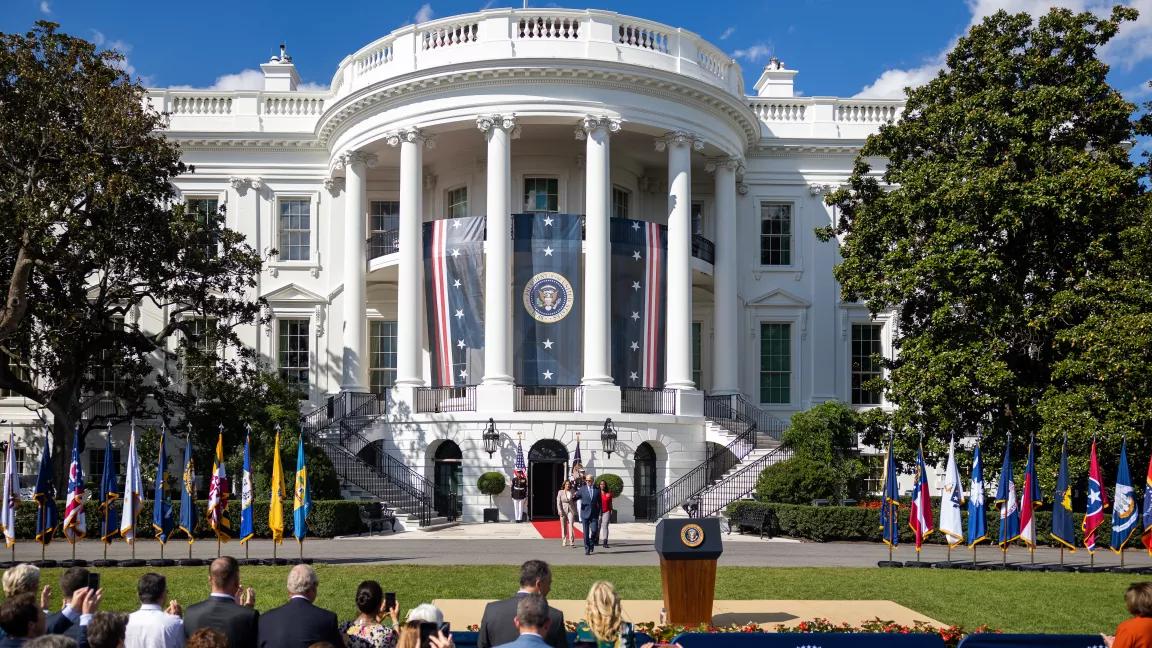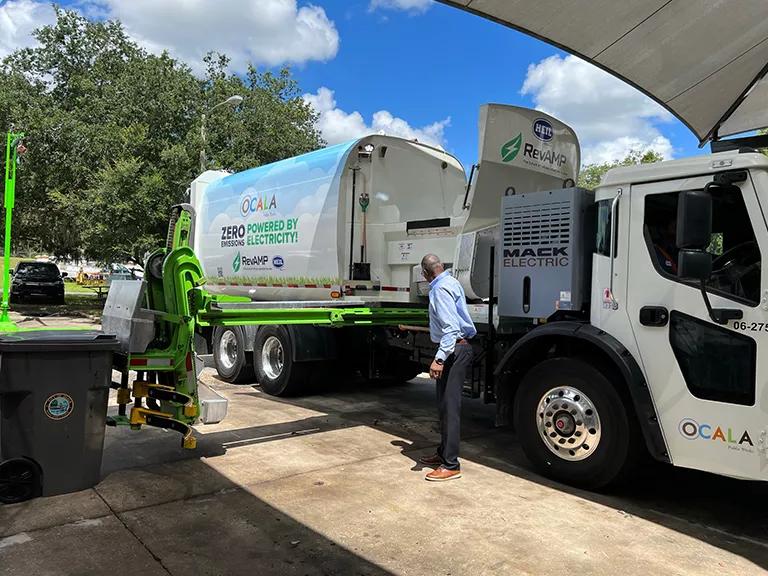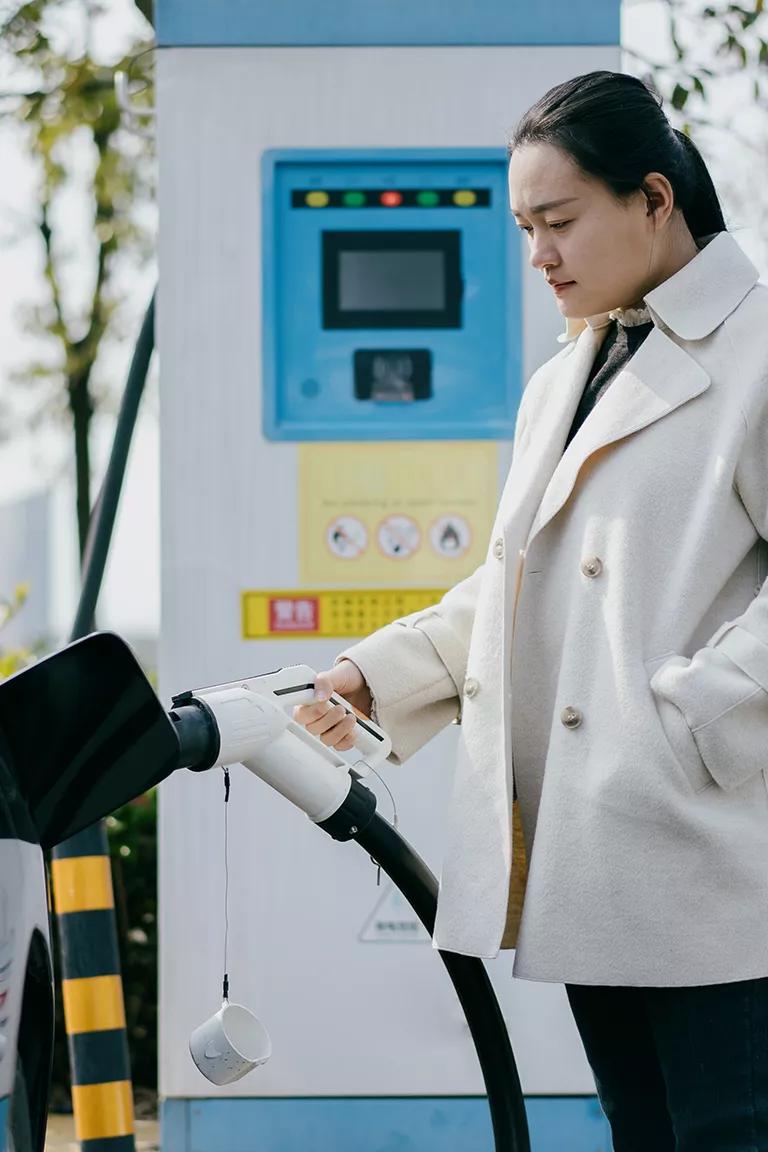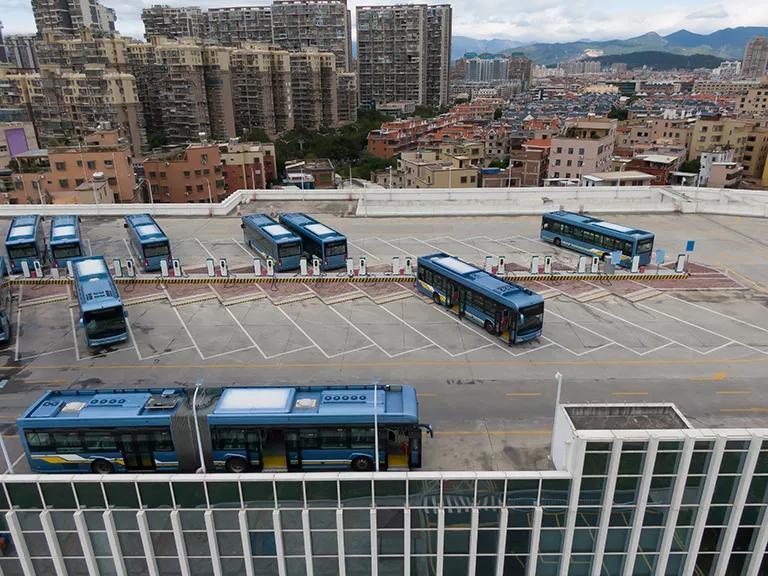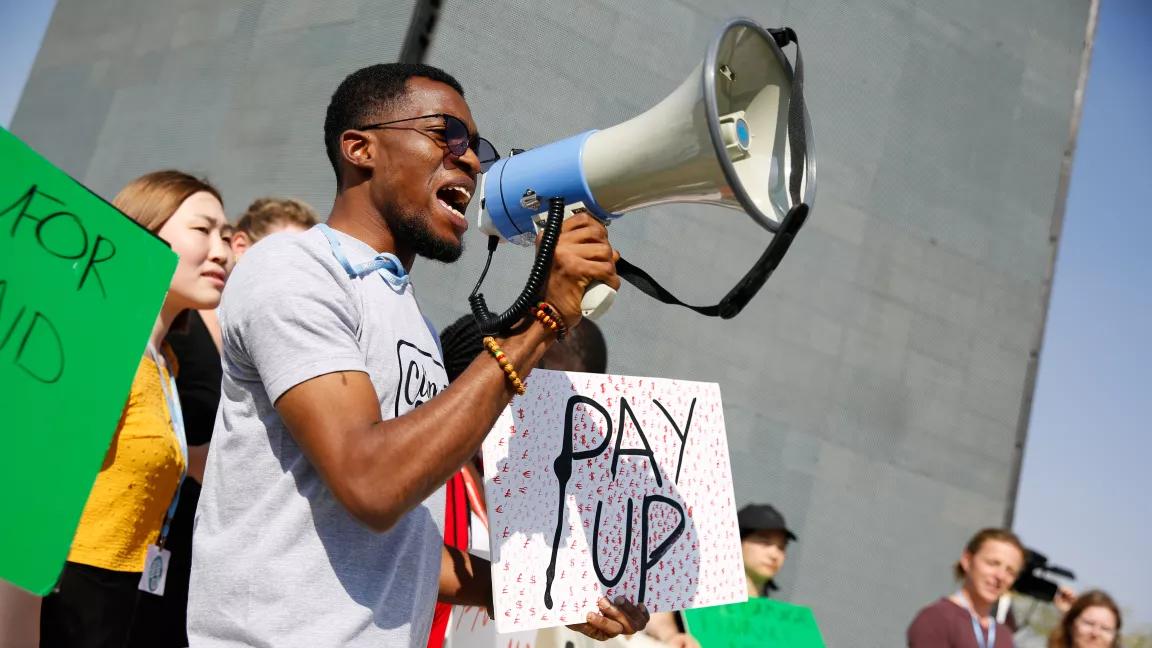Fighting for Our Climate Future
NRDC is dedicated to pursuing smart, substantive, and equitable climate action in the United States and around the world.
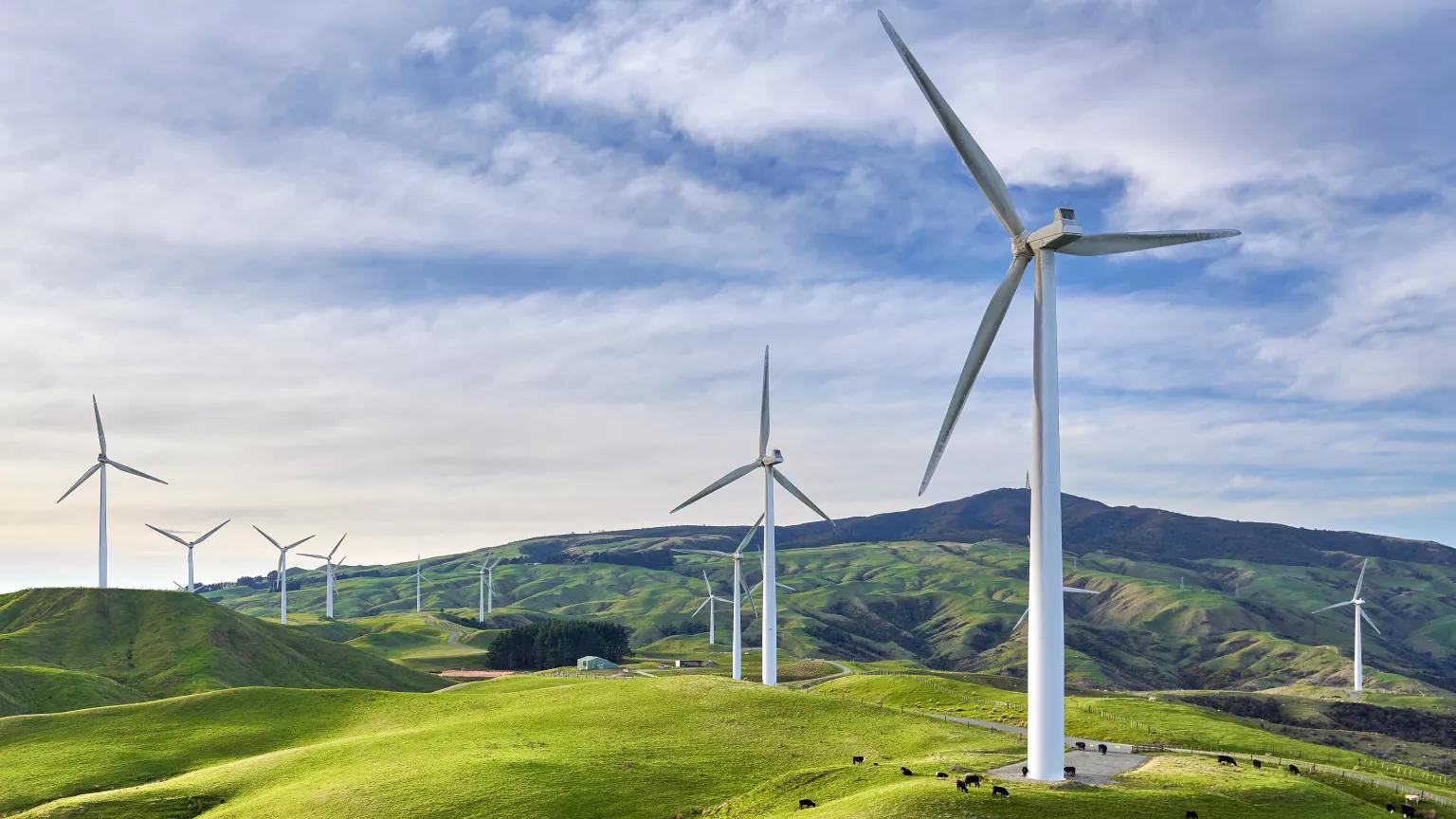
Wind and solar are already more cost-competitive than fossil fuel power in most places.
Geoff McKay via Flickr, CC BY 4.0
The climate fight is multifaceted: To win it, we must replace our old fossil fuel economy with a new one based on clean energy; restore the integrity of the lands and waters that serve as our crucial carbon sinks; and recognize the intrinsic links between climate justice and racial, social, and economic justice. NRDC is working to make this new vision for the future a reality. Our work on climate benefits from the specialized knowledge of experts in renewable energy, electric vehicle (EV) technology, clean air policy, sustainable agriculture, and other areas. Our advocates are steadfastly committed to using their unique expertise to improve lives and communities, foster equity, and ensure that future generations inherit a safe, secure, and thriving planet.
Shaping Historic Climate Action
In 2022, President Joe Biden signed the most sweeping and important piece of climate legislation in U.S. history: the Inflation Reduction Act. This hard-won victory will cut our greenhouse gas emissions by 40 percent (from 2005 levels) by 2030 and increase investment in environmental justice programs. Among its various climate provisions, it offers tens of billions in tax credits and incentives to rapidly expand the country’s renewable energy production, makes EVs more affordable, and promises to clean up high-polluting industries like cement and steel production and overhaul building emissions.
While acknowledging that the United States still has more to do if we’re to meet our climate goals, Andrew Wetzler, senior vice president of NRDC’s Nature program, believes the new law “will create jobs, drive innovation, and strengthen the economy” and also “help the United States begin to deliver on its global responsibility to cut climate pollution.” The $60 billion it allots toward meeting the needs of overburdened and historically underserved communities, he adds, “has challenged conventional thinking about what’s necessary and possible when it comes to addressing the needs of communities on the frontlines of climate hazard and fossil fuel harm.” And while the funding is significant, “it’s also the minimum of what’s needed,” he emphasizes.
Passage of the Inflation Reduction Act came on the heels of another legislative win that has the potential to further cut our carbon footprint and make communities and infrastructure more climate resilient: 2021’s bipartisan, $1.2 trillion Infrastructure Investment and Jobs Act. NRDC and our members and online activists pushed hard for the passage of the Inflation Reduction Act from its inception all the way to its signing, through writing letters to editors, submitting petitions, calling members of Congress, providing vital resources to our litigators and policy advocates, and joining us at rallies to press for bold climate action. Along the way, they made sure that the lawmakers who crafted both pieces of legislation seized opportunities to build out our transportation infrastructure, boost efforts to end food waste (which, combined with food loss, produces 8 to 10 percent of emissions globally), clean up our manufacturing sector, and center frontline communities in any discussion of how benefits will be allocated.
Did You Know?
The Inflation Reduction Act could prevent as many as 4,500 air pollution deaths and nearly 120,000 asthma attacks by reducing fine particulate matter.
Cleaner Air & Healthier Communities
For more than half a century, NRDC has fought to keep communities free of the pollutants that make our planet warmer and its people sicker and less safe. The past year saw us taking that battle to the streets, the courts, and the ozone layer.
When coal interests went before the U.S. Supreme Court trying to strip the U.S. Environmental Protection Agency (EPA) of its authority under the Clean Air Act to curb carbon emissions from power plants, we vigorously defended EPA’s ability to do its job. While the Court’s conservative majority narrowed the agency’s options, it conceded that EPA can still write standards that require power plants to use pollution controls that make them operate more cleanly. The Inflation Reduction Act, enacted soon after, helped move the needle forward by providing large tax incentives and grants that will enable power plant owners to install new carbon-cutting technologies, and by directing EPA to set new standards for these plants under the Clean Air Act, taking those incentives into account. In response to the Court decision and the new law, EPA has promised to propose new power plant carbon standards by March 2023. In the meantime, we’ll continue to press for the measures that are so urgently needed to keep people and communities safe.
NRDC is also leading the push to slash emissions from the fastest-growing source of global emissions: transportation. Sometimes that means pushing influential agencies to act faster and more aggressively. For example, when the United States Postal Service (USPS) was poised to invest billions in a dangerous procurement plan to make 90 percent of its new delivery fleet encompass polluting, gas-powered vehicles—even though clean battery-powered alternatives were available and affordable—we joined with the UAW (International Union, United Automobile, Aerospace and Agricultural Implement Workers of America) and sued. And because of continued pressure from us and our partners, the USPS finally got the message and announced plans to increase the purchase of electric delivery trucks and instead go 75 percent electric for purpose-built vehicles (which are designed for specific business uses).
The victory marked a milestone in NRDC’s ongoing and decades-long vehicle standards work, which has helped secure tailpipe emissions reductions and increased fuel economy nationally, while also succeeding in creating a market that has accelerated widespread EV adoption. And because solutions to the global crisis require global strategies, our commitment to ushering in an EV future extends well beyond U.S. borders. This past year also saw us coordinating closely with China’s EV100 program to publish a comprehensive guidebook for integrating that country’s EV fleet—already the largest in the world and growing at a staggeringly high rate—into its grid.
Meanwhile, we’ve continued to stand beside New Jersey and Pennsylvania residents as they oppose the New Fortress Energy LNG export project, which, if completed, would mean as many as 1,650 trucks and two 100-car trains transporting highly explosive liquefied natural gas (LNG) every day through a part of the northeastern United States that’s home to more than 2 million people. We’re calling on lawmakers to put a stop to the project that endangers the immediate safety of communities along the proposed routes, and that will only exacerbate myriad other issues, including environmental injustice, fracking, PCB pollution, and climate change. And when the Federal Energy Regulatory Commission, long in need of new guidance for the way it approves fracked gas projects, began to backtrack on its commitment to advance environmental justice by reneging on its duty to consider the climate and community impacts of any pending and future natural gas projects, we held the agency to account.
The climate movement’s strength in diplomacy, policymaking, and advocacy showed up in another landmark event this year. More than 35 years ago, NRDC began working with the architects behind the Montreal Protocol, the international agreement signed by 198 countries that saved the earth’s ozone layer by curbing the use of ozone-depleting chlorofluorocarbons. Our work in this area continued over the course of the next seven presidential administrations. We celebrated a related victory in September. That’s when the Senate voted to approve U.S. ratification of the Kigali Amendment to the Montreal treaty, which requires a similar drawdown in the use of hydrofluorocarbons, climate-warming gases typically found in cooling and air-conditioning units. Ratification means that “the United States will once again be a full partner in implementing this powerful ozone and climate protection treaty,” explain David Doniger and Christina Theodoridi of NRDC’s Climate & Clean Energy program. The win was backed by environmental and industry groups, as well as lawmakers on both sides of the aisle.
Climate Adaptation & Mitigation
Even as we focus on tactics to reduce emissions, such as by modernizing our infrastructure, we must also take steps to address our new reality: routine heat waves, more intense wildfire and hurricane seasons, heavier flooding along coastlines and waterways, and more protracted droughts. NRDC is addressing the balance between helping communities adapt to today’s climate impacts while simultaneously trying to lessen tomorrow’s.
At the 27th Conference of the Parties to the United Nations Framework Convention on Climate Change (COP27), ours was a steady and persistent voice for increasing international funding to help some of the most vulnerable nations on earth—countries that have contributed very little to climate change yet suffer its impacts disproportionately—build out their climate-resilient infrastructure. We also joined the call for wealthy, high-emissions countries to mobilize funding aimed at addressing unjust legacies of loss and damage. This included advocacy targeting the American government: NRDC convened a direct conversation with Special Presidential Envoy for Climate John Kerry, which helped yield a commitment to supporting a specific fund to help developing nations cope with and recover from climate catastrophes that have already had tragic impacts.
Also during the conference, our India team organized a side event in partnership with India’s Ministry of Environment, Forest and Climate Change and the U.N. Climate Change Global Innovation Hub to address the interlinked challenge of extreme heat and access to cooling in heat-stressed countries. COP27 represented an “important step forward to confront the climate crisis,” said NRDC president & CEO Manish Bapna at the conference’s conclusion, “and yet much more must be done.” Looking ahead, he added, “leaders need to better recognize that the climate crisis threatens lives and livelihoods in every corner of the planet—but also that the solutions benefit all of us.”
On the federal level, we saw progress on the climate adaptation front to address the challenges of sea level rise and flooding. In response to a petition we filed in 2021, FEMA (Federal Emergency Management Agency) initiated a process to revise regulations that guide development in the nation’s floodplains. Among the changes NRDC is seeking are incorporating sea level rise and extreme weather events into flood maps (to more accurately portray future flood risk) and updating antiquated building and land-use standards, which serve as the basis for building and zoning codes in more than 22,000 communities in all 50 states and U.S. territories. These standards have not been updated since the 1970s, decades before climate change became a household term. Meanwhile, because so many policy realms affect climate change, we’ve continued to advocate for Congress to pass a stronger Farm Bill that reinforces the intrinsic link between healthy farms and healthy communities by prioritizing regenerative agriculture, food system resilience, and equity.
“Doing what’s best for the country at home is the first step toward restoring trust in U.S. climate leadership abroad.”
Manish Bapna, NRDC president & CEO
Global Solutions Begin with Local Action
Even as we fight for stronger international and federal responses to the climate crisis, NRDC understands that many of the most effective strategies and solutions are taking place at the local level, in cities and states.
With support provided by Bloomberg Philanthropies’ American Cities Climate Challenge, and in partnership with NRDC, the city of Chicago recently announced its plan for all city-owned buildings, facilities, and operations to use electricity from 100 percent renewable sources by 2025. The initiative represents “a major step forward in the transition to clean buildings,” note Valeria Rincon of NRDC’s Climate & Clean Energy Program and Megan Ross of NRDC’s People & Communities Program, and recognizes “the role this plays in creating a healthier, more sustainable Chicago.” We’ve also lent our support to legislation in North Carolina that will help the Tarheel State reduce its carbon emissions from electricity generation by 70 percent (from 2005 levels) by 2030—and get emissions down to net-zero by 2050.
We continue to push for smart, strong, and equitable solutions from coast to coast. In California, we testified and submitted comments to the California Air Resources Board to support the passage of rules that will require every new car and truck sold in the state to be zero-emissions by 2035. Our members and online activists sent more than 2,200 letters in support of these rules, which will serve as a model for other states, the federal government, and other countries looking to adopt similar standards. We’ve also advocated to put an end to oil drilling in the city of Los Angeles and L.A. County, where low-income communities and communities of color too often share space with dirty energy infrastructure. And on the opposite side of the country, in New York, we joined with dozens of affordability, housing, and environmental groups to help push the Advanced Building Codes, Appliance and Equipment Efficiency Standards Act of 2022 over the finish line. The new law requires energy codes for new construction to reduce greenhouse gas emission; sets higher efficiency standards for a broad range of consumer products such as TVs, computers, and air purifiers; and blocks the sale of the worst-performing versions of these products. As a result, it promises to slash energy consumption (and the resulting carbon emissions), all while saving consumers $15 billion over the next 15 years.
More 2022 Highlights
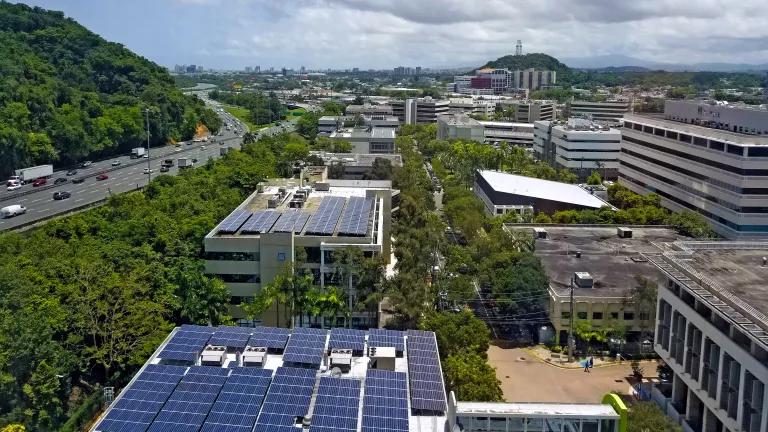
Standing with Communities
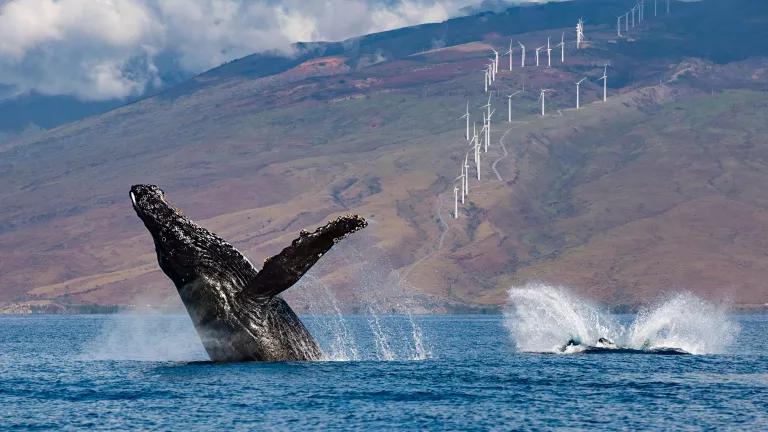
Protecting the Wild
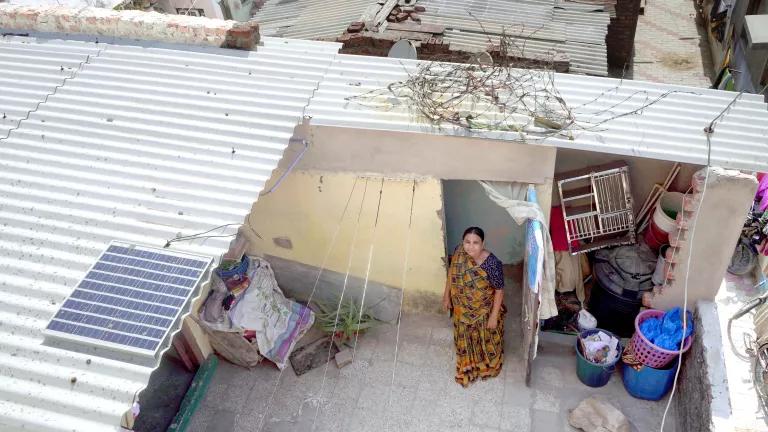
Defending Public Health
Annual Report 2022: A Turning Point
Explore the rest of our annual report for an overview of what we've accomplished in 2022.


